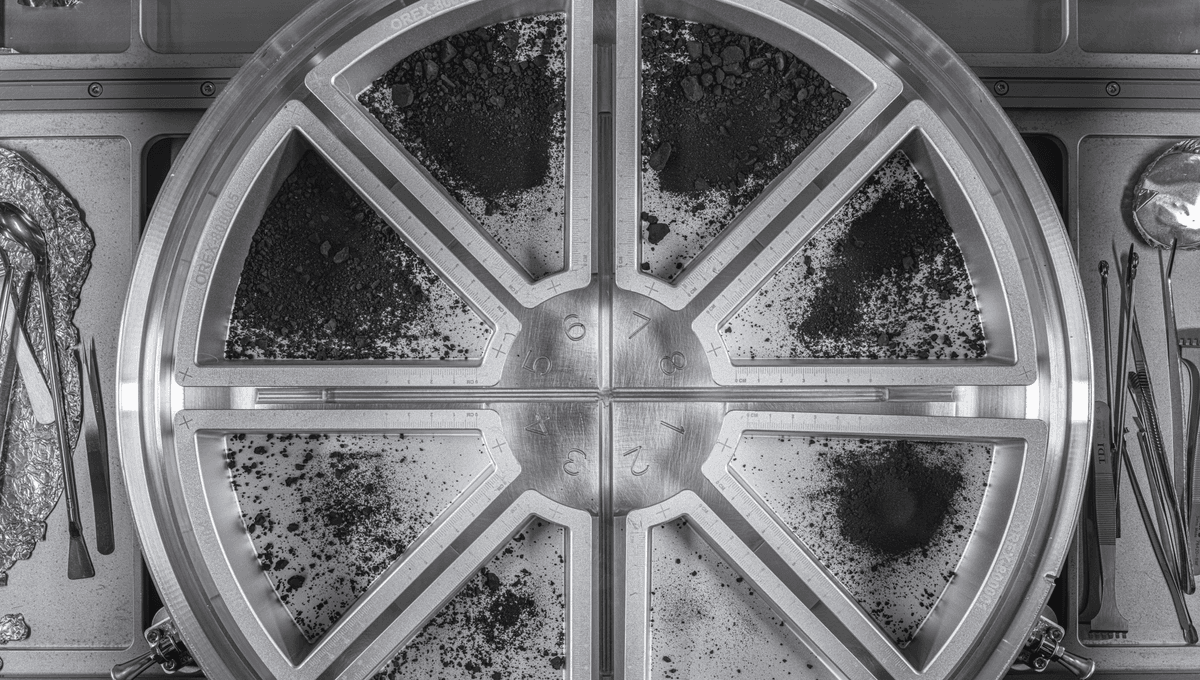
When OSIRIS-REx was planned, the mission team aimed to collect at least 60 grams of material. That was the requirement for a successful mission. Well, consider OSIRIS-REx doubly successful, as it brought back home 121.6 grams (4.29 ounces), the largest collection of extraterrestrial material from beyond the Moon.
The return of the Touch-and-Go Sample Acquisition Mechanism (TAGSAM) was an adventure. It was dropped by the spacecraft in the Utah desert and then transferred to NASA’s Johnson Space Center. There, in a special clean room, it began to be opened. The goal was to keep it away from any possible terrestrial contamination.
In October, the removal of the large canister revealed rocks and dust for a total of 70.3 grams (2.48 ounces). The team hadn’t even got to the TAGSAM yet… and they couldn’t. Two fasteners in the system weren’t budging. So, the team had to come up with an ingenious way to design, develop, and test new tools without bringing contaminants in. They succeeded last month and finally, the full sample was available.
It has been announced that the Bennu material will be containerized and distributed for researchers to study. Institutions from across the globe will have access to the material brought back by this extraordinary mission, and many researchers have already been practicing their plans for the precious cargo.
“We’re going to hand carry them. So either me or a colleague will go over and collect them from the Johnson Space Center,” Professor Sara Russell, part of the OSIRIS-REx Sample Analysis Team from the Natural History Museum, London, told IFLScience. “But the Johnson Space Center is also happy to send them by courier as well. Actually, we had to rehearse this. Everything in this mission is so well rehearsed.”
Once it is with scientists, it will be analyzed and compared to meteorites and samples collected by the Japanese missions Hayabusa and Hayabusa-2, which collected samples from asteroids Itokawa and Ryugu, respectively.
“The first sample we’ll get will be a little vial of tiny little bits of powder, and we’ll pick out bits from that and CT scan them so we’ll be able to look at the structure of them and get an idea of its composition,” Professor Russell told IFLScience.
“Then we’ll put it in an electron microscope, which will enable us to do some element mapping. So we’ll see what elements are in there and that will tell us what minerals we’re looking at. We’ll do some X-ray diffraction, which looks at the crystal structure. And all of that will kind of give us this picture of what kind of object it is.”
A catalog of what scientists will be able to request will be made available in a few months. But 70 percent of the sample will be kept for future analysis. This is similar to the 60 percent that was stored from Hayabusa-2 when it returned with samples of asteroid Ryugu in 2020.
Source Link: NASA's OSIRIS-REx Breaks Record For Largest Asteroid Sample Ever Collected In Space